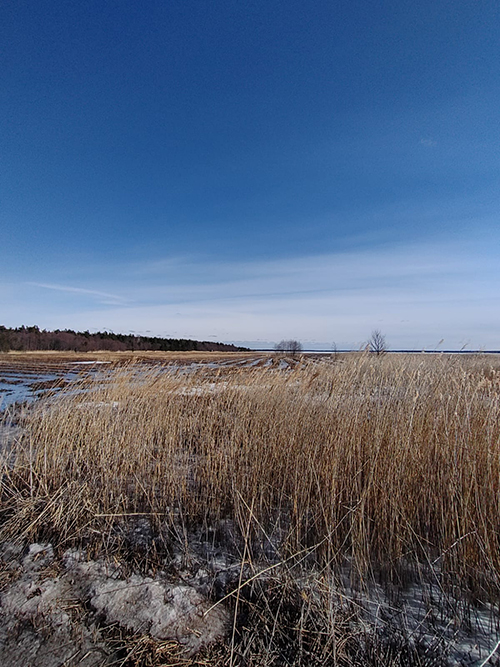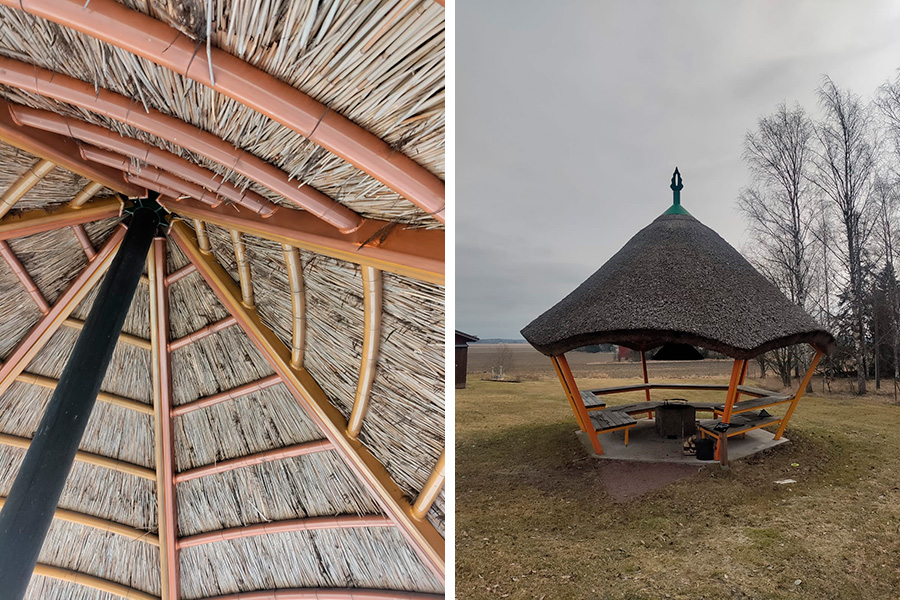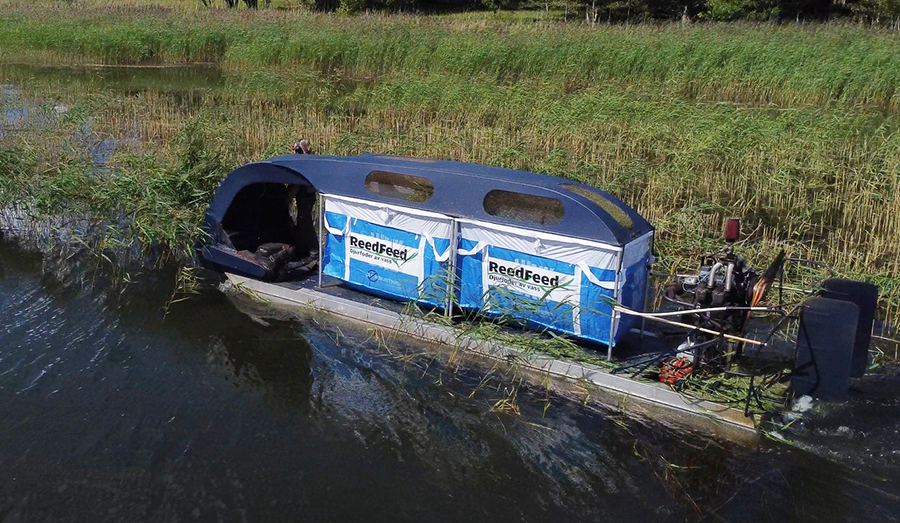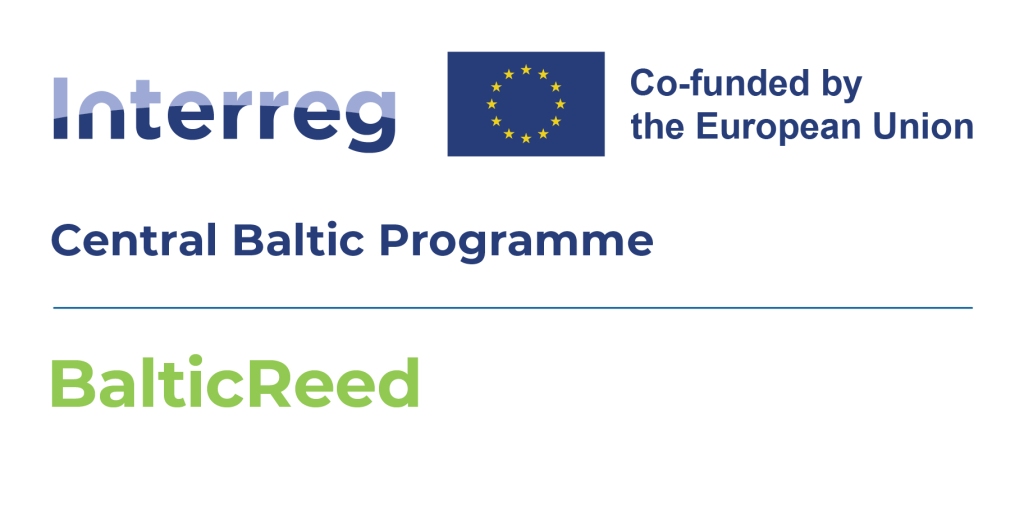In Finland, reed can be found along the entire coast from Åland to Lapland and in inland in shallow waters and ditches. Reed is not a new acquaintance to Finland, and it is estimated that it has been utilized since the prehistoric times. In the last decades, the amount of reed beds have increased dramatically, meanwhile the number of coastal meadows has decreased from the estimated 60, 000 hectares in 1950s to around 6, 000 hectares. The overgrowth of reed and the growing risk of eutrophication of coastal areas has increased the pressure to find solutions for utilization of reed.
The biodiversity in coastal areas benefit from mosaic-like reed areas

A well-planned reed harvesting improves the condition and biodiversity of overgrown coastal areas. When planning the harvesting of reed, it is essential to assess the need for harvesting and schedule the work so that important nesting and hiding places are not lost to the birds, fish and insect species that rely on the reed beds. Reed beds can also provide protection, prevent erosion and can be an important buffer area between nutrients coming from land and the water bodies. Harvesting reed removes nutrient-rich vegetation and opens the shores, which especially benefits waders and the diverse vegetation of coastal meadows.
In terms of biodiversity, the best solutions are mosaic-like reedbeds, the implementation of which requires a comprehensive survey of coastal areas. Coastal multipurpose plans have been created to be a tool in regional coastal planning, which includes reed harvesting, such as the Yyterinniemi coastal area multipurpose plan (doria.fi, in Finnish) that was published in 2023.
More information on the coastal multipurpose planning in the guide published in 2013 (ely-keskus.fi, in Finnish).
Developments in the utilization of reed
Utilization of reed is vital in order to remove the harvested reeds and the nutrients bound to them from the coasts. The utilization of reed has a long history, especially as fodder and as raw material for reed roofs. The production of reed roofs has declined, especially in Finland, and the use of reeds as fodder has largely been replaced by grass grown in fields. Promoting the utilization of reeds is essential so that harvesting and transporting of reed would also be financially profitable for companies and various actors that intend to utilize the reed. The development of logistics chains and equipment is also important because the locations of reed beds in coastal areas are often difficult to reach, which is why the harvesting and transportation of harvested reed material can be quite laborious and therefore expensive. Various projects, companies and institutions and the collaborations between them have tried to find solutions to these challenges.
Versatile and innovative reed products have been piloted and developed, such as using reed as drinking straws or even as a raw material for textiles and cosmetics. John Nurminen Foundation’s Coastal Reed project successfully piloted the use of reed in mulch products and as a growing medium that could partly replace peat, in cooperation with Kekkilä-BVB Oy, Biolan Oy and Kiteen Mato ja Multa Oy. The Finnish cement manufacturer Finnsementti Oy studied the use of reed as an energy source and the utilization of ash from combustion as a raw material for clinker in Parainen in 2023. Rantaparturit Oy operating in Southwest of Finland has used local reed as a raw material for reed roofs and as bedding in outdoor toilets and in composts.

In the workshop of the BalticReed project organized in April 2024, Sjöutsikt Sverige AB presented their joint reed project with the Swedish University of Agricultural Science SLU, where they researched the suitability of reed as an alternative fodder especially for horses, but also for cows, sheep, pigs and even water buffalos. The reed feed product developed in the project (Reed Feed) has given good results in Sweden, and the demand for reed feed has even exceeded the current supply. Reed is rich in fiber and has a lower energy value compared to competing feeds, and the minerals it contains help maintain fluid balance. Sjöutsikt Sverige AB had also developed a new reed harvesting machine called Reedeco, which harvests by crushing the reeds above the water surface and collects the reed material into containers. An improved version of the Reedeco harvester is in planning and hopefully brought to the consumers in the future.

The BalticReed project is involved in the development of reed value chains
In May 2023, the EU Interreg Central Baltic-funded BalticReed project started, which aims to find solutions to the challenges of the reed value chains and thereby also improve the state of the Baltic Sea. The project aims to evaluate and improve the planning processes of reed harvesting, the legislations that applies to harvesting, logistical challenges, and the development of utilization of reed. Centre for Economic Development, Transport and the Environment for Southwest Finland is a project partner in the BalticReed project. The site selection and harvesting in Southwest Finland will be implemented utilizing the multipurpose plans for coastal areas made in the regions. Also, a legislative report on water law challenges in reed harvesting is being worked on.
Michelle Kozlova
Co-ordinator, BalticReed project
Centre for Economic Development, Transport and the Environment for Southwest Finland

